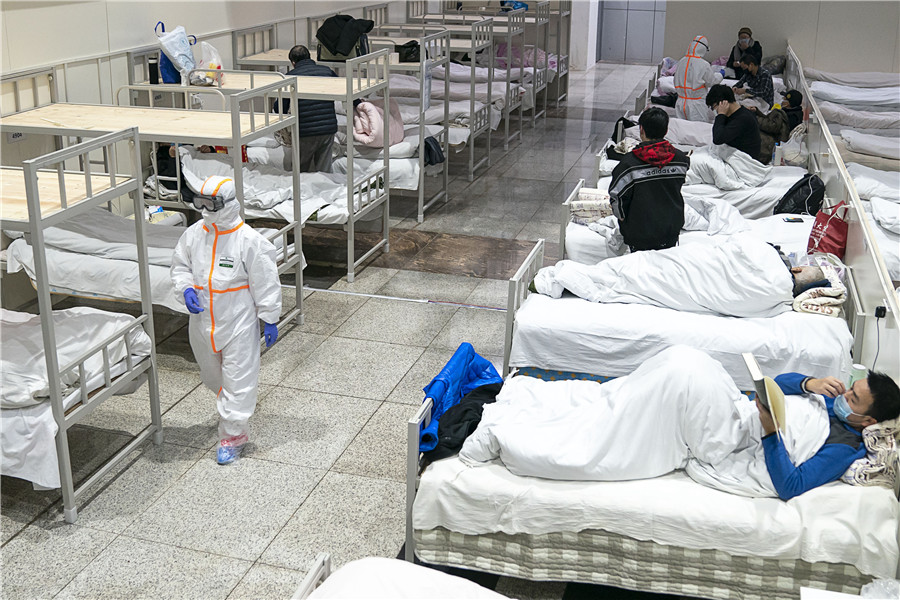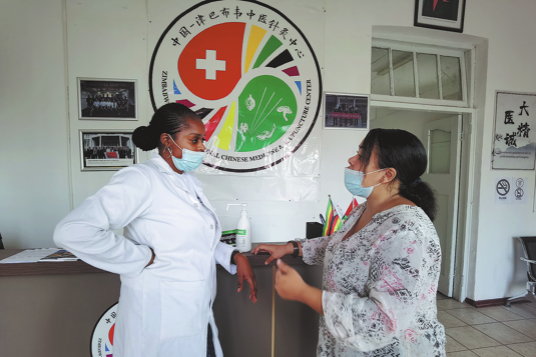Wuhan to cut sources of virus


Door-to-door visits made in Hubei's provincial capital to ensure no patient is left unattended
Wuhan, the epicenter of the ongoing outbreak of the novel coronavirus, is making the best efforts to cut the infection sources by screening those who are infected and suspected to have been infected via door-to-door visits to ensure no one is missed.
The move was made while Vice-Premier Sun Chunlan called on the city government to act in "a state of war" and fully implement all prevention and control measures.
The number of patients diagnosed with the virus in Wuhan, provincial capital of Hubei, reached 10,117 as of Wednesday midnight, taking up 36 percent of the national total, according to the National Health Commission.
Sun, who is in charge of healthcare in the State Council and is head of the special work group to guide the novel coronavirus epidemic control in Hubei, said on Thursday that those who are infected and suspected to have been infected, as well as people who have fever of an unknown cause and close contacts with diagnosed patients must be transferred to quarantine facilities and hospitals immediately after door-to-door screening.
Not a single family or person should be missed, she said at a meeting in Wuhan. There are about 9 million people still in Wuhan, which has been under lockdown since Jan 23.
Sun said fighting the outbreak is the most important and urgent task for the government at the moment.
There must be officials on duty 24 hours a day, Sun said.
To ease the shortage of hospital beds in the city and treat as many people as possible, Wuhan health commission announced on Wednesday night that all hospitals will only treat novel coronavirus patients who are in severe condition.
Eleven temporary hospitals in gymnasiums and exhibition halls around the city will take those with light symptoms. Other venues such as hotels and schools have also been temporarily taken over by the government to accommodate other high-risk groups.
As of 7:30 am on Thursday, the temporary hospital at Hongshan Gymnasium, which was completed in two days, began to provide medical treatment for the first group of 328 patients who tested positive for the virus but showed no severe symptoms.
Staffed with about 300 medical workers, the hospital will ultimately be capable of housing 800 patients from the city's Wuchang and Hongshan districts, as well as Wuhan East Lake High-Tech Development Zone. Every 50 patients will be taken care of by four doctors and 12 nurses.
After the completion of all the temporary hospitals, 10,000 to 20,000 patients will be able to receive treatment there, according to local authorities. These hospitals will only admit confirmed patients aged 18 to 65 who are able to care for themselves and have no other respiratory, cardiovascular and cerebrovascular diseases or mental illnesses. The patients should also test negative for the flu virus at the same time. Patients will be discharged after recovery and certain tests.
Wang Chen, a leading expert on respiratory and critical care medicine and president of the Chinese Academy of Medical Sciences, said the move can effectively control infection sources in the city.
"The key (to controlling the epidemic) is to get all the confirmed patients into hospitals so that they can receive medical treatment and be effectively quarantined and not contact family members and the community," he told China Central Television on Wednesday night.
Due to the shortage of hospital beds in the city, many patients with light symptoms had to quarantine themselves at home, which has increased the risk of spreading the virus among family members and communities, he said.
He said patients with minor symptoms are relatively more mobile, which means they are more likely to spread the virus. "We must provide centralized quarantine facilities with enough beds such as these temporary hospitals to keep the patients away from society while receiving treatment," he said.
"If the patients' condition deteriorates, we would be able to transfer them to a regular hospital without delay. Although, the condition at the temporary hospitals cannot compare with that at regular hospitals, the patients can receive proper medical treatment," said Wang, who has been in Wuhan since Saturday.
"Setting up these temporary hospitals is not an ideal solution but at the moment it's the best solution to prevent the virus from spreading among family members and communities," Wang added.
Some hospitals and hotels in the city had been used to quarantine people who have fever or are suspected to have been infected with the virus.
Liu Kun in Wuhan contributed to this story.
- China surpasses 100 million kW in new energy storage
- HRC Group's LEU100 drone debuts at CIIE, targeting China's low-altitude mobility sector
- Bird-watching festival in Yunnan unveils new avian discoveries
- Shandong's Zhanhua winter jujube a modern success story
- Outstanding Chinese medical workers honored at Hunan event
- Large dolomite deposit discovered in Gansu




































